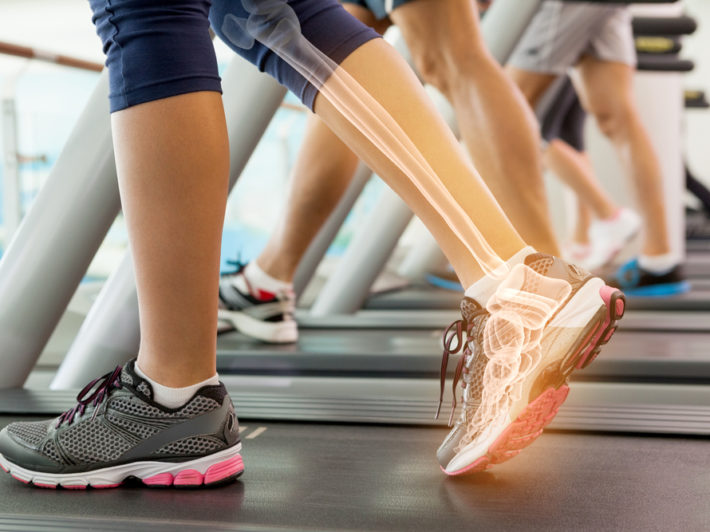
by Bianca Garilli, ND
Globally, 39% of adults aged ≥18 years were classified as overweight and 13% obese in 2016, totaling a jaw-dropping 1.9 billion adults overall.1 With obesity rates soaring, tripling worldwide since 1975, most of the Earth’s population now lives in countries where overweight and obesity cause more morbidity and mortality than being underweight.1
Keeping pace with these gains in adiposity is the behemoth weight loss and weight management market, which consists of fitness centers, slimming centers, consulting services, online weight loss programs, and associated products.2 In the US alone, the weight loss and weight management market is expected to reach USD 246.51 billion by the year 2022, a sharp increase from 2017 when this number was USD 175.94 billion, representing a compound annual growth rate (CAGR) of 6.9%.2 Although North America has historically taken the lead on weight loss and maintenance expenditure, Europe is a close second, and Asia is expected to register the highest CAGR by 2022 due to their rising incidence of overweight, obesity, and related chronic illnesses.2
Weight loss leads to numerous health benefits for individuals with obesity or overweight, including improved glycemic indices and cardiovascular health, in addition to reduced inflammation and a lower risk of all-cause mortality.3-4 In fact, modest weight loss (e.g. losing 5-10% of body weight) has been shown to improve fasting glucose, triglycerides, and total cholesterol, while losing >10% of total body weight ameliorates the previously mentioned biomarkers in addition to reducing LDL cholesterol levels.3
Nonetheless, striving for “weight loss” as the primary goal without properly integrating the total concept of body composition into the equation is a lopsided approach that may lead to unintended, negative outcomes. This is because weight loss is not strictly relegated to loss of adipose tissue but will naturally, in fact, also net lean muscle and bone losses if proper nutrition and physical activities are not included with intentionality in the weight loss approach.
Weight loss and reduced muscle mass
Weight loss, without appropriate focus on maintenance of healthy lean body mass, can result in lower muscle mass and consequently, reduced muscle strength.5 Over time, reduced muscle mass and strength have been shown to be predictors of reduced mobility, slower walking speed, long-term risk of disability, and lower rates of survival.5-6 It is critical then, that a healthy weight loss program includes methods aimed at maintaining a healthy level of muscle mass and strength for each individual. Regular moderate-to-vigorous physical activity and an exercise regimen that includes strength training helps maintain and even improve muscle mass and strength by stimulating muscle protein synthesis in the body.7-8
Maintaining healthy muscle mass levels is also influenced by nutritional inputs when undergoing calorie-restrictive weight loss programs. Several studies have confirmed findings that elderly individuals with obesity lose less muscle mass with hypocaloric weight loss programs that include exercise and a diet higher in protein than the control group; one of these studies recommended 1.2 g of protein per kg body weight.8-9
Weight loss and reduced bone mass
A similar situation can be seen with concurrent weight and bone mass losses. In fact, many healthcare professionals are reluctant to recommend weight loss in the elderly or in frail individuals who are overweight for fear that the weight loss will also result in a bone mineral density (BMD) reduction. However, the relationship between weight loss and bone is much more nuanced.10-11
Weight loss is more likely to impact hip and lumbar spine BMD (hip > spine losses), but usually does not net total BMD loss.11 Furthermore, bone density is more closely linked to lean mass than total body and fat mass; in fact, moderate weight loss accompanied by an age- and condition-appropriate exercise approach, particularly including strength training and high impact loading activities, can mitigate BMD loss and even result in BMD gains.10 Interestingly, in a review of 32 randomized controlled trials, BMD effects varied with the weight loss approach – calorie restriction, calorie restriction + exercise training, or exercise training alone:11
- Calorie restriction induced weight loss: ↓ hip BMD
- Calorie restriction + exercise induced weight loss: ↓ hip BMD
- Exercise induced weight loss: ↑ hip BMD
Think ‘whole body’ when it comes to weight loss
Achieving and maintaining a healthy weight is a prudent goal associated with significant health gains. The caveat is that weight loss can occur in a multitude of ways – both healthy and unhealthy. It’s less about the number on the scale and much more about overall, strategic body composition changes. Current literature seems to indicate that healthy weight loss should include a structured, individualized dietary and exercise program complete with aerobic and strength training components and sufficient or higher (than the age- and gender-specific IOM RDAs) daily protein consumption. Programs including both aspects (exercise and nutrition) will support healthy muscle mass, muscle strength, and bone mineral density, which together encourage long-term mobility, strength, wellness, and survival.
Citations
- WHO. Obesity and overweight. http://www.who.int/news-room/fact-sheets/detail/obesity-and-overweight. Accessed September 26, 2018.
- Business Wire. Global weight loss and weight management market analysis & forecast to 2022, with an expected CAGR of 6.9%. https://www.businesswire.com/news/home/20180807005460/en/Global-Weight-Loss-Weight-Management-Market-Analysis. Accessed September 26, 2018.
- Brown J et al. Effects on cardiovascular risk factors of weight losses limited to 5–10 %. Transl Behav Med. 2016;6(3):339–346.
- Kritchevsky S et al. Intentional weight loss and all-cause mortality: a meta-analysis of randomized clinical trials. PLoS One. 2015;10(3):e0121993.
- Kim B et al. Changes in muscle strength after diet-induced weight reduction in adult men with obesity: a prospective study. Diabetes Metab Syndr Obes. 2017;10:187–194.
- Volpato S et al. Role of muscle mass and muscle quality in the association between diabetes and gait speed. Diab Care. 2012;35(8):1672-1679.
- Weiss E et al. Effects of weight loss on lean mass, strength, bone, and aerobic capacity. Med Sci Sports Exerc. 2017;49(1):206-217.
- Cava E et al. Preserving healthy muscle during weight loss. Adv Nutr. 2017;8(3):511–519.
- Weijs PJM et al. Exploration of the protein requirement during weight loss in obese older adults. Clin Nutr. 2016;35(2):394-398.
- Hunter G et al. Weight loss and bone mineral density. Curr Opin Endocrinol Diabetes Obes. 2014;21(5):358–362.
- Soltani S et al. The effects of weight loss approaches on bone mineral density in adults: a systematic review and meta-analysis of randomized controlled trials. Osteoporos Int. 2016;27(9):2655-2671.
Bianca Garilli, ND
Dr. Garilli is a former US Marine turned Naturopathic Doctor (ND). She works in private practice in Northern California as well as running a consulting company working with leaders in the natural and functional medicine world such as the Institute for Functional Medicine and Metagenics. She is passionate about optimizing health and wellness in individuals, families, companies and communities- one lifestyle change at a time. Dr. Garilli has been on staff at the University of California Irvine, Susan Samueli Center for Integrative Medicine and is faculty at Hawthorn University. She is the creator of the Veterans for Health Initiative and is the current President of the Children’s Heart Foundation, CA Chapter.




